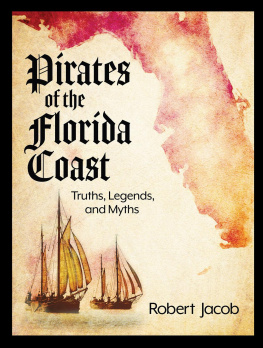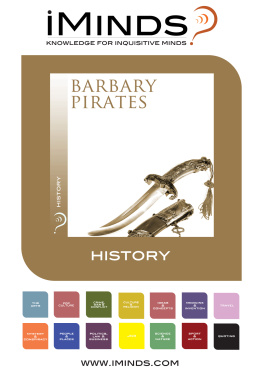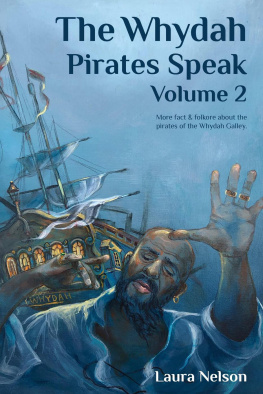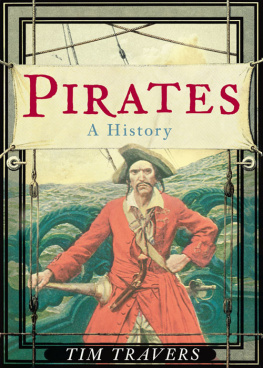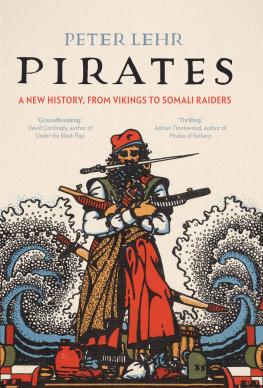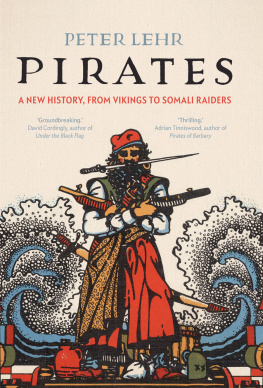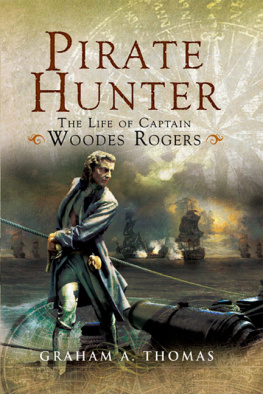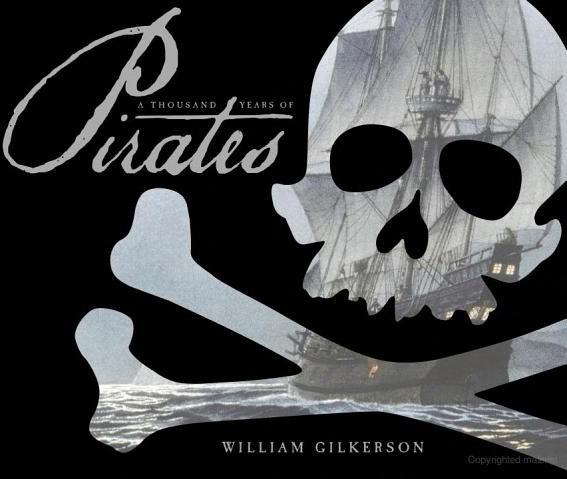This work is dedicated to my treasured captains, Paul Erling Johnson, Daniel Moreland, and Llewellyn Howland III.
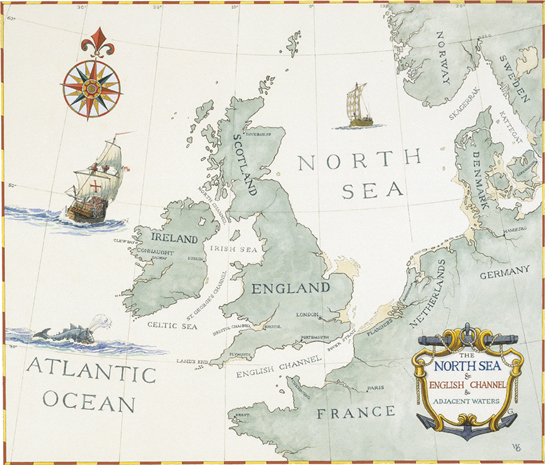

FROM VIKINGS TO
CONQUISTADORES
Pirates have been here from time before memory first on the waters of the Aegean Sea four thousand years ago, and later around Africa, throughout the Orient, off the islands of Indonesia, on the Pacific Ocean, and from the warm Sea of the Caribs to the wintry fjords of Scandinavia, where this account begins. It was in Sweden, Denmark, and Norway that Norsemen conceived the ships and the tactics that would be used by all of the generations of European pirates to follow.
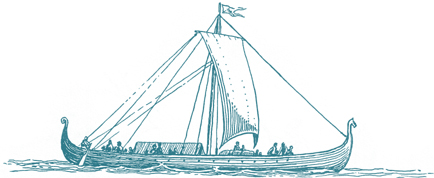
THE VIKINGS
I n ancient times, the ancestors of the Vikings learned to split and shape oak trees into planks. These had a natural twist which, when laid opposite, made the shape of a boat. Several planks together, carefully sculpted and fitted by ax to a straight keel-piece and two end-pieces, made a vessel that could carry cargo and enough men to row it. Over the centuries, the beautifully crafted Norse boats evolved into ships that could crisscross all of the northern seas under sail, and then the oceans beyond, reaching even the shores of America, five hundred years before Columbus.
The same axes that shaped the Viking ships became fierce weapons in the hands of determined warriors. Though wooden swords and shields were used for sparring, starting in childhood, the sons of the Norsemen were taught by fathers, uncles, and neighbors to swing an ax at an opponent, or to throw it with deadly accuracy. According to the ancient religion of that place and time, warriors who fell in combat earned a seat for the rest of eternity in the mead halls of Valhalla, home to warlike gods and to mortal heroes slain nobly in battle. Meanwhile, until they met that fate, there was good marauding, trading, and pillaging to reward warriors, far from home.
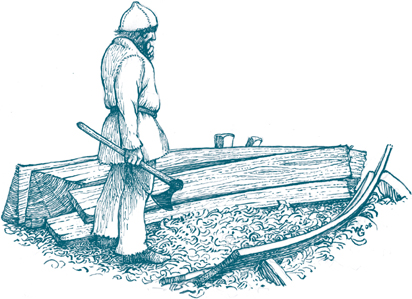
With their seaworthy ships and characteristic ferocity, the Vikings brought many battles to the coasts of Europe, especially to Scotland, Ireland, and England. In those waters cargo vessels waited to be captured, and there were prosperous settlements to plunder ashore. Although the usual tactic of the Norsemen was to make a fast raid and get out before any superior force could arrive, if there was no superior force in the neighborhood, they might simply take over and stay. They did this so often that in time they claimed much of Europes coastline.
The old Norse gods of war were eventually replaced by a new religion that was less bloody. In passing, however, the Vikings bequeathed their warrior instinct and their tactics to generations of European pirates. Everywhere they settled, they left their legacy.
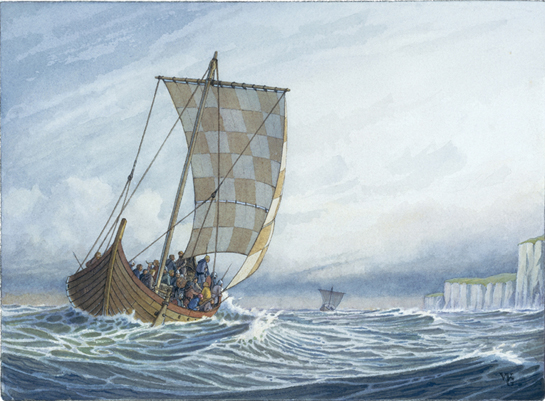
THE CONQUISTADORES
O ver time, ships of the Vikings were widely copied by the Europeans. They were also altered and enlarged, giving them more decks for cargo, men, supplies, and eventually cannon. Aloft, the single square sail of the Norse ship evolved into several sails, with more masts, all enabling ever-greater voyages of discovery and conquest. In the most seaworthy ships ever built, and with cannon and other weapons more powerful than any of their time, the maritime nations of Europe had the means to plunder the world as quickly as they could explore it.
Portuguese sailors found their way around Africa, opening the route east to India and the Spice Isles beyond (soon to be exploited by the Dutch). Spanish mariners probed west, first under Columbus, and then, as gold was found, with growing fleets. Famously, Hernando Cortez landed on Mexicos east coast in 1519 with a small handful of vessels and men. Marching into the heart of the Aztec empire with fewer than two hundred soldiers, he immediately took sides in the local wars that he found, defeating the enemies of his chosen friends, with their help.
The Aztec warriors fought primarily with war clubs and other weapons that were unable to dent the armor of the Spanish soldiers, who attacked with a thunder of musketry belching fire and smoke, and rode among them on trained war horses that could kill by kicking as their riders brought slaughter with their deadly long steel swords. The locals had never seen anything like it. The conquistadores also had the advantage of tactics and martial disciplines that soon swept away any opposition to the chosen allies of Cortez. In this way he enlarged his own forces, until at last he brought down Mexicos Aztec empire in the process of looting it. Hundreds of pounds of gold and silver jewelry was plucked of its precious gemstones, and then melted into ingots to be shipped back to Spain.
The discovery of the Pacific Ocean on the western side of Panamas narrow isthmus (joining North and South America) provided thousands of more miles of unknown continent. Under Juan Rodriguez Cabrillo, a squadron sailed north, charting the coast of California, meeting natives with seagoing canoes built of planks. Under Francisco Pizarro, a land expedition went south, finding the mines of Peru that would yield not only gold but silver in the thousands of tons, plus precious gems of many kinds, riches beyond the dreams of men.
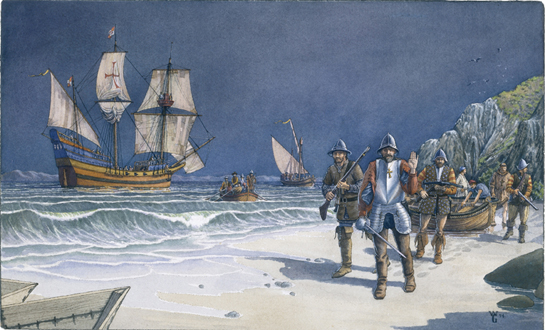

Everywhere, the conquistadores greeted the native peoples with smiles of friendship, but they wore their armor and kept their superior weapons at the ready. In exchange for what they wanted, they brought priests and a new religion to guide the natives spiritually through the loss of their pagan gods, and the loss of their wealth.


